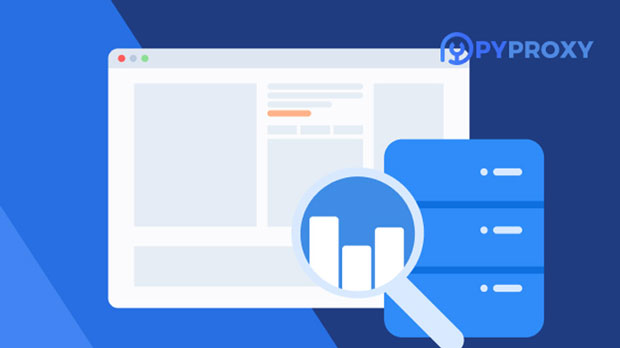Proxies are essential tools for users who value online anonymity, enhanced security, and unblocking geo-restricted content. Among the various proxy protocols, HTTP and SOCKS5 stand out as two of the most commonly used options. This article delves into the security aspects of HTTP and sock s5 proxies, comparing their features to help users better understand which type offers more robust protection. In particular, we will analyze how PYPROXY and Pirate Proxies, as proxy service providers, might implement these protocols and the impact on users' privacy and safety. Understanding HTTP and SOCKS5 ProxiesBefore diving into the security aspects, it's essential to clarify what HTTP and SOCKS5 proxies are. HTTP proxies are designed to work specifically with HTTP and HTTPS protocols. These proxies function by handling only web traffic and are typically used for tasks such as web browsing or accessing specific websites. On the other hand, SOCKS5 proxies operate on a lower level and are more versatile. They can support a variety of internet protocols, including HTTP, FTP, and even peer-to-peer connections like torrents. SOCKS5 also has the capability of handling different types of traffic such as UDP (User Datagram Protocol), making it a more flexible and powerful option.Security Features of HTTP and SOCKS5 ProxiesSecurity is the primary concern for users when selecting a proxy type. Although both HTTP and SOCKS5 proxies serve the same general purpose of masking a user’s IP address, they differ significantly in the way they handle traffic and offer security features.1. Encryption and Anonymity: - HTTP Proxy: HTTP proxies typically do not provide encryption for your data. They simply forward web traffic from your device to the target server. This means that your data could be intercepted and potentially exposed to third parties during transmission. Additionally, HTTP proxies often send your requests without securing your browsing session, making them more vulnerable to attacks like Man-in-the-Middle (MITM). - socks5 proxy: SOCKS5 proxies, in contrast, offer a higher level of security. While they do not inherently encrypt traffic, they can be used in conjunction with other encryption methods like VPNs to secure data. SOCKS5 also offers enhanced anonymity because it works with a variety of protocols, not just HTTP. This flexibility makes it more resistant to monitoring and surveillance, especially when paired with additional security measures.2. Traffic Handling and Protocol Support: - HTTP Proxy: An HTTP proxy is limited to handling HTTP traffic, meaning that it is unable to proxy other types of data, such as FTP or torrent traffic. It can only forward requests that are related to web pages. While this is fine for basic browsing, it doesn't offer the same level of flexibility as SOCKS5. - SOCKS5 Proxy: SOCKS5 proxies support a broader range of protocols, including HTTP, FTP, and UDP. This flexibility means SOCKS5 is better suited for complex or sensitive activities, such as file sharing, gaming, and streaming, where security and privacy are paramount. By supporting a variety of traffic types, SOCKS5 ensures a more comprehensive safeguard for all your online activities.Potential Vulnerabilities in HTTP and SOCKS5 ProxiesAlthough both proxies offer anonymity and protection, they are not without their flaws. Let’s explore some of the vulnerabilities inherent in each type:1. HTTP Proxy: - Weak Encryption: As previously mentioned, HTTP proxies do not encrypt traffic, making them susceptible to interception by third parties. This makes them less secure when it comes to protecting sensitive data, like login credentials or personal details. - HTTP Request Leaks: Sometimes, HTTP proxies fail to fully hide your IP address, especially when accessing sites that use complex tracking methods. These leaks can compromise your privacy and defeat the purpose of using a proxy. 2. SOCKS5 Proxy: - Lack of Built-In Encryption: While SOCKS5 does not encrypt data by default, it can be paired with other encryption technologies like VPNs or SSH tunnels. However, this can sometimes add complexity, and users may not fully understand how to configure these systems for maximum security. - Exposed IP Address: If not configured properly, SOCKS5 proxies may allow for IP address leaks, especially in situations where DNS queries are not routed through the proxy. This could lead to tracking or identifying the user's real IP address.Practical Use Cases: Which Proxy Is Better for You?To determine which proxy offers better security in practical situations, we need to consider common use cases:1. Basic Web Browsing: If your primary goal is to simply access websites anonymously, an HTTP proxy might suffice. It is quick, lightweight, and easy to configure. However, for users who want more protection and who engage in tasks like online banking or accessing private accounts, it is advisable to use a SOCKS5 proxy. This will provide a better level of security, especially when paired with encryption tools.2. Torrenting and Peer-to-Peer Sharing: SOCKS5 proxies are far superior for torrenting or other peer-to-peer (P2P) file-sharing activities. Unlike HTTP proxies, which cannot handle P2P protocols, SOCKS5 is built to route traffic from a variety of protocols, ensuring that your IP address remains hidden during file sharing. Moreover, SOCKS5 proxies offer better speed and performance for this kind of activity, which is essential when dealing with large file transfers.3. Streaming Services: Streaming services often employ geo-restrictions, and users may rely on proxies to bypass these limitations. SOCKS5 proxies are typically more effective in this case, as they are able to support multiple protocols and better handle the load of streaming media. Additionally, the ability to handle UDP traffic ensures that streaming services, which require low-latency communication, can operate more smoothly.Conclusion: Making the Right Choice Between HTTP and SOCKS5 ProxiesIn conclusion, when comparing PyProxy and Pirate Proxies in terms of security, it is clear that SOCKS5 proxies generally offer superior protection. Their ability to handle a wide range of protocols, combined with enhanced anonymity and the option to use encryption, makes them the more secure option overall. However, HTTP proxies still have a place for basic, low-risk activities such as web browsing, where speed and ease of use take precedence over complete security.If security is your top concern, especially for activities involving sensitive data or diverse internet protocols, SOCKS5 is undoubtedly the better choice. However, if you are just browsing websites without the need for advanced security, an HTTP proxy might serve your needs more efficiently. Choosing between HTTP and SOCKS5 proxies largely depends on your use case and level of security required. By understanding the strengths and weaknesses of each, users can make informed decisions about which proxy service, like PyProxy or Pirate Proxies, will best meet their needs.
Oct 20, 2025


































































